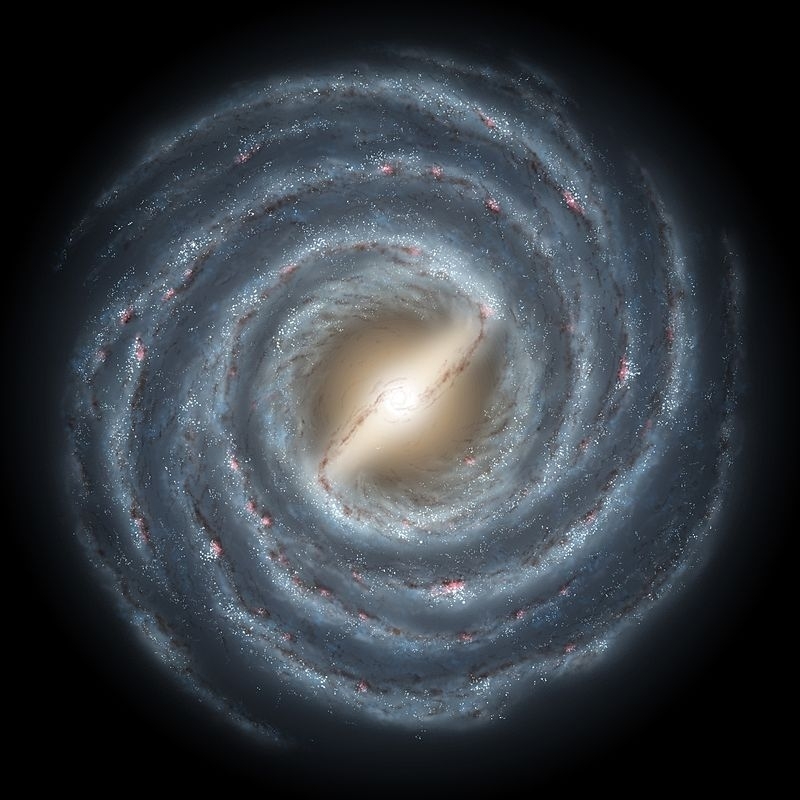

Researchers have found evidence of the existence of rocky exoplanets with a high probability of having plate tectonics, increasing the likelihood that they are habitable (image: R. Hurt / NASA)
Researchers have found evidence of the existence of rocky exoplanets with a high probability of having plate tectonics, increasing the likelihood that they are habitable.
Researchers have found evidence of the existence of rocky exoplanets with a high probability of having plate tectonics, increasing the likelihood that they are habitable.

Researchers have found evidence of the existence of rocky exoplanets with a high probability of having plate tectonics, increasing the likelihood that they are habitable (image: R. Hurt / NASA)
By Elton Alisson | Agência FAPESP – One of the conditions for the emergence and persistence of life on Earth is the existence of geological activity such as earthquakes and volcanoes.
Volcanic activity caused by the movement of tectonic plates over the mantle (plate tectonics) recycles gases such as carbon dioxide through the mantle, crust, atmosphere and oceans, helping to keep the planet habitable by maintaining temperatures at ideal levels for the survival of living beings, scientists explain.
A study conducted by Brazil’s National Space Research Institute (INPE) suggests our galaxy, the Milky Way, contains other rocky planets with a high probability of having plate tectonics, increasing the chances that they are habitable.
The study was supported by FAPESP. The results have been published in Monthly Notices of the Royal Astronomical Society (MNRAS).
“We found that geological conditions favorable to the emergence and maintenance of life exist on rocky planets, that life may exist throughout the Milky Way and that it may have originated at any time during our galaxy’s evolution,” said Jorge Luis Melendez Moreno, a professor at the University of São Paulo’s Institute of Astronomy, Geophysics and Atmospheric Sciences (IAG-USP) in Brazil and one of the authors of the study.
Scientists at other research institutions in Brazil and abroad also participated in the study.
They determined the surface parameters, masses and ages of 53 solar twins located at different points in the Milky Way. They also analyzed the chemical composition of these stars, called solar twins because their temperature, gravity and surface chemistry are similar to those of our Sun. The aim of the study was to discover whether potentially habitable rocky planets also orbit around the stars in question.
The analysis was performed using a spectrograph called HARPS (High Accuracy Radial velocity Planet Searcher) installed on the 3.6 m telescope operated by the European Southern Observatory (ESO) at the La Silla facility in Chile. The instrument measures the electromagnetic spectra of the “colors” emitted by celestial bodies, from shorter (ultraviolet) to longer (infrared) wavelengths.
The findings showed that the stars contain an abundance of thorium, a radioactive element with isotopes that split owing to atomic instability into smaller isotopes, emitting energy in a process called radioactive decay.
The energy released by the decay of unstable isotopes – not only thorium but also other radioactive elements such as uranium and potassium – gives rise to Earth’s mantle convection and tectonic activity. Part of the planet’s internal heat is a remnant of the primordial heat from its formation, but at least half is due to radioactive energy.
Thus, the initial levels of these radioactive elements in a rocky exoplanet contribute indirectly to the habitability of its surface, especially given the long time they take to decay, on the scale of billions of years, the researchers explained.
“The thorium levels we measured in these solar twins point to a sufficient amount of available energy from the decay of this radioactive element to maintain mantle convection and plate tectonics in any rocky planets that may be orbiting around them,” said Rafael Botelho, first author of the study. Botelho is studying for a PhD in astrophysics at INPE.
The initial thorium abundances in the solar twins were compared with the abundances of iron, silicon (an indicator of mantle thickness and mass in rocky planets) and two other heavy elements, neodymium and europium. The results showed that the thorium-silicon ratio in the solar twins increased over time and was equal to or higher than that of our Sun since the formation of the Milky Way.
“There are signs that thorium is also abundant in old solar twins. This means the Milky Way’s disk could be full of life,” said André Milone, a scientist at INPE and supervisor of Botelho’s PhD research.
The article “Thorium in solar twins: implications for habitability in rocky planets” by R. B. Botelho, A. de C. Milone, J. Melendez, M. Bedell, L. Spina, M. Asplund, L. dos Santos, J. L. Bean, I. Ramirez, D. Yong, S. Dreizler, A. Alves-Brito and J. Yana Galarza can be retrieved from: academic.oup.com/mnras/article-abstract/482/2/1690/5134163?redirectedFrom=fulltext.
Republish
The Agency FAPESP licenses news via Creative Commons (CC-BY-NC-ND) so that they can be republished free of charge and in a simple way by other digital or printed vehicles. Agência FAPESP must be credited as the source of the content being republished and the name of the reporter (if any) must be attributed. Using the HMTL button below allows compliance with these rules, detailed in Digital Republishing Policy FAPESP.





